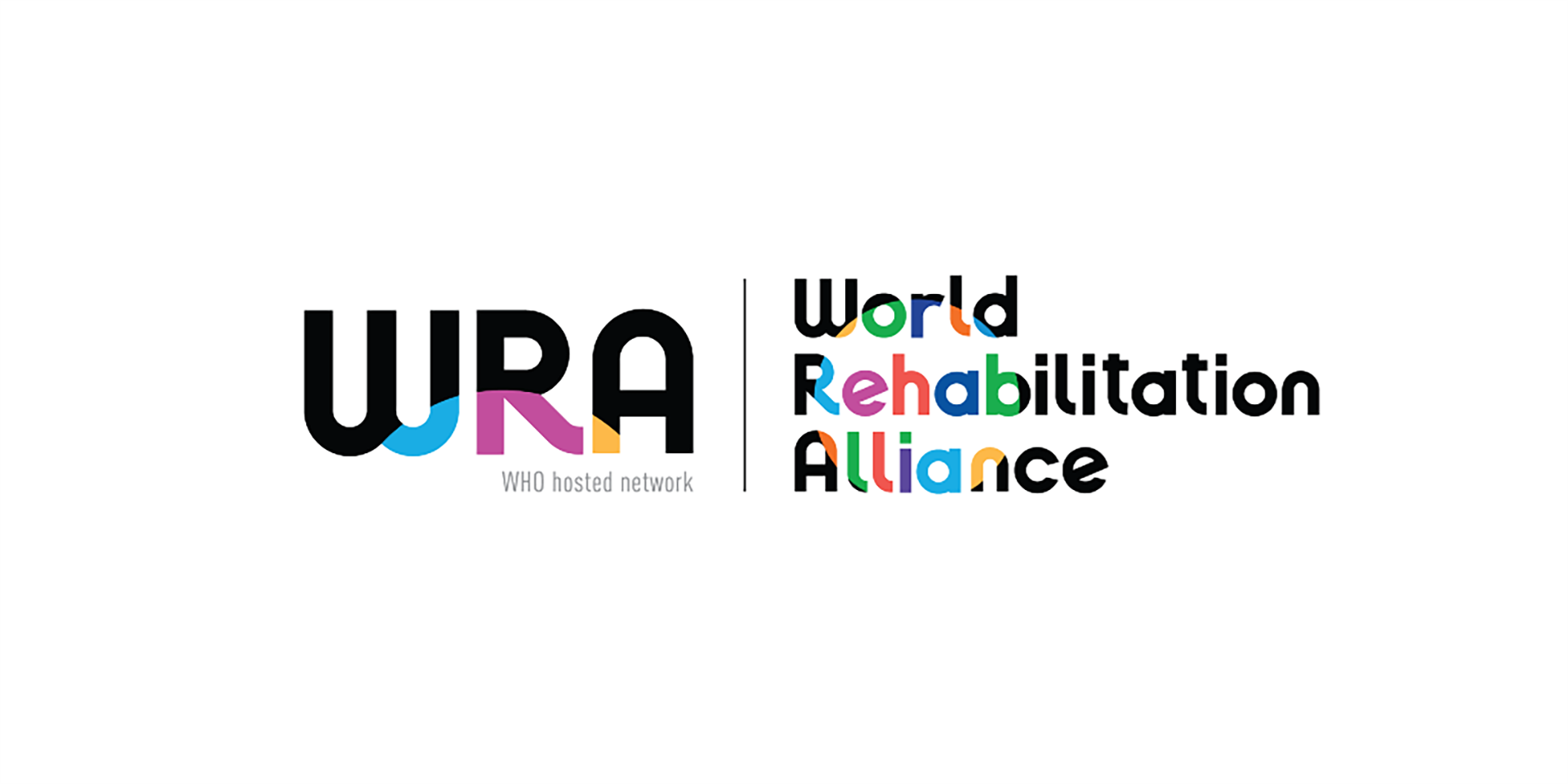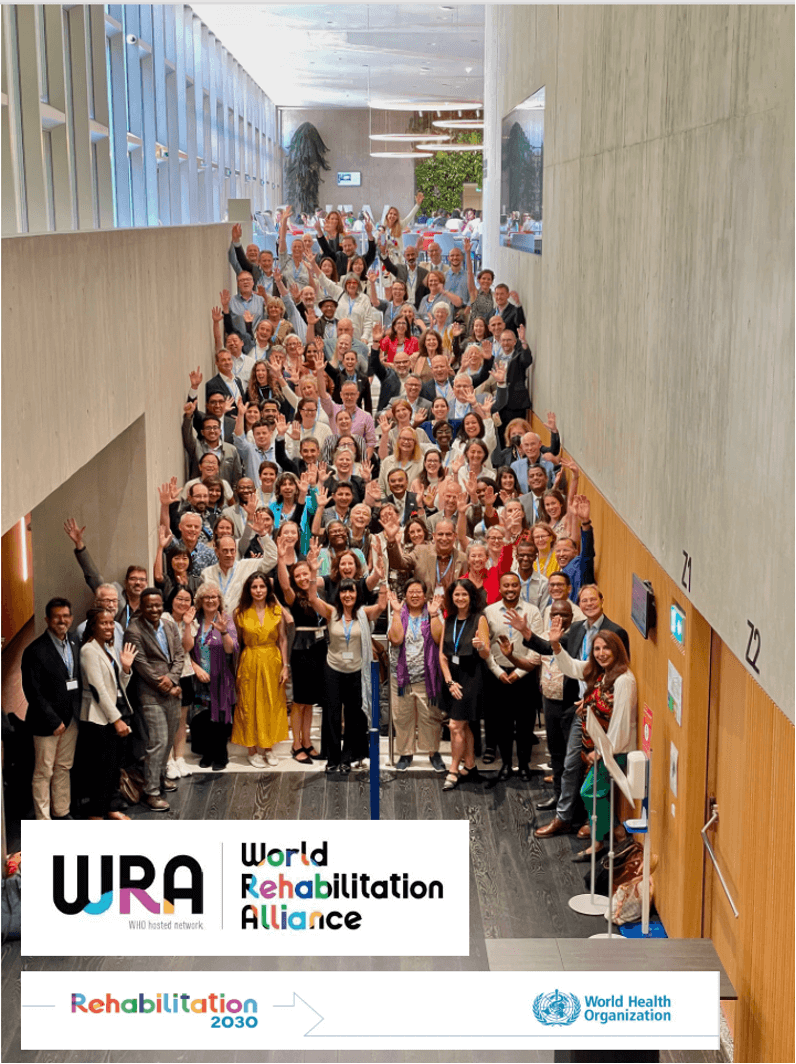The Integration of Primary Care and Rehabilitation

The Integration of Primary Care and Rehabilitation
Introducing the World Rehabilitation Alliance
We all have patients desperately in need of rehabilitation services.
You know them as…
•
the patient who injured his shoulder at work eight weeks ago and is not improving,
•
the one who has had a hip replacement and would like to be independent again,
•
the patient with cerebral palsy needing ongoing interdisciplinary rehabilitation services,
•
the person with dementia who struggles with getting dressed and planning meals,
•
the child whose language is not developing as expected and the parents think might have hearing loss,
•
the adult with dual hearing and vision loss who has become socially isolated,
•
the person injured in an earthquake who needs to get back to work to support their family financially,
….and the list continues.
As a primary care physician, you can only do so much with the time constraints on your schedule, the large amounts of paperwork, limited training in rehabilitation, and the growing complexity burden of your patients.
Let’s solve this! We envision a future where these patients receive the care they need (to reduce disability and optimize functioning) without increasing physician burnout. We can do this in keeping with the principles of Universal Health Coverage (UHC) were people have access to the full range of quality health services they need (rehabilitation is along the continuum of essential health services), when and where they need them, without financial hardship.
Our vision as the Primary Care workstream of the World Rehabilitation Alliance (WRA) is for Primary Care and Rehabilitation to be integrated in all areas across the globe. The WRA and WONCA will work together as advocacy partners to further this vision. Below, we have provided more information on why this is important and ways we can work together to improve primary care.
The World Health Organization (WHO) Rehabilitation 2030 initiative outlines the profound unmet need for rehabilitation worldwide, and highlights the importance of strengthening health systems to provide rehabilitation. The
World Rehabilitation Alliance (WRA) is a World Health Organization (WHO) hosted global network of stakeholders whose mission is to support the implementation of the
Rehabilitation 2030 Initiative through advocacy and networking activities.
Why focus on rehabilitation?
Globally, 1 in 3 people are living with a health condition that benefits from rehabilitation.
1 These needs are spread across the lifespan, from children with congenital and intellectual impairment, to young adults with physical limitation(s) resulting from unintentional and war-related injuries, to older people experiencing chronic/progressive disease or difficulties associated with aging. The WHO defines rehabilitation as “a set of interventions designed to optimize functioning and reduce disability in individuals with health conditions in interaction with their environment”. Rehabilitation services typically include physiotherapy, occupational therapy, speech- language therapy, physical rehabilitation medicine, chiropractic, psychology, audiology, vision rehabilitation, amongst others.
Why now?
Rehabilitation needs will grow as populations continue to age, and the number of people living with chronic disease continues to rise throughout the world. Many countries are not equipped to respond to existing rehabilitation needs, let alone the forecasted increase that is arising from health and demographic trends. Rehabilitation is often not prioritized in countries and continues to be under-resourced. As a result, countless individuals do not have access to rehabilitation services, leading to an exacerbation of their condition, further complications, and lifelong consequences. In many low- and middle-income countries, more than 50% of people do not receive the rehabilitation services they require.
2
Why should rehabilitation be integrated into primary care?
By integrating rehabilitation in primary care, clinicians can increase coverage and make services more accessible and affordable. Broadening access to rehabilitation services enables individuals requiring these services to maintain their independence and participation in the workforce while reducing required financial supports.
3 Furthermore, integration of rehabilitation services within primary care can help to avoid costly hospitalizations and re-admissions.
3
What does the WRA Primary Care workstream do?
The WRA is divided into 5 different workstreams: Primary Care, Workforce, Emergencies, Research, and External Relations. The Primary Care workstream is composed of stakeholders from numerous backgrounds, sectors, and areas of expertise. We have representation from member states / state bodies, intergovernmental organizations, non-governmental organizations, private sector, philanthropic foundations, and academic institutions. We are also composed of individuals coming from a wide range of healthcare / allied health backgrounds. Bringing together multiple different perspectives and using a collaborative approach.
Our objectives are:
1.
To create a common awareness of the necessity to integrate rehabilitation and primary care
2.
To engage international organizations of primary care and rehabilitation professionals in the development of strategies to advance the integration of rehabilitation and primary care.
3.
To develop mutual collaboration among health providers in integrating rehabilitation and primary care along the continuum of care (promotion – prevention – treatment – rehabilitation – palliation).
How can you make change?
•
Engage with your rehabilitation colleagues: strike up conversation and ask them what they do!
•
Work to build links with rehabilitation providers/associations in your area/region.
•
Advocate to policy makers about funding allocation for rehabilitation services in primary care.
•
Coordinate interprofessional education/training (ie. medical students/residents and students from rehabilitation disciplines having combined classes, shared clinical rotations, etc).
•
Purposefully build models of care which include interprofessional teams.
•
Learn how to easily, safely, and effectively deliver a limited set of prioritized evidence-based interventions for rehabilitation in primary care using
WHO tools.
•
Participate in WONCA/WRA joint advocacy activities starting this year. With both organizations having a broad global reach and depth of expertise we can make change in primary care across the world.
Nishani Umasuthan,
Family physician, University of Toronto Department of Family and Community Medicine
Katherine Stead,
Family physician, University of Toronto, WRA Co-lead
Martin Brodsky,
Speech-language pathologist, American Speech-Language-Hearing Association
Katherine Rouleau,
Family physician, University of Toronto, WRA Co-lead
Jo Lewis,
Occupational therapist, The University of Sydney
Abena Tannor,
Family physician, Rehabilitation physician, Consultant Rehabilitation Programme, WHO Headquarters
Pauline Kleinitz,
Physiotherapist, Technical Advisor Rehabilitation Programme, WHO Headquarters
1 Cieza, Alarcos & Causey, Kate & Kamenov, Kaloyan & Hanson, Sarah & Chatterji, Somnath & Vos, Theo. (2020). Global estimates of the need for rehabilitation based on the Global Burden of Disease study 2019: a systematic analysis for the Global Burden of Disease Study 2019. The Lancet. 396. 10.1016/S0140-6736(20)32340-0.
2 https://www.who.int/initiatives/rehabilitation-2030
3 https://www.who.int/publications/i/item/WHO-HIS-SDS-2018.4
